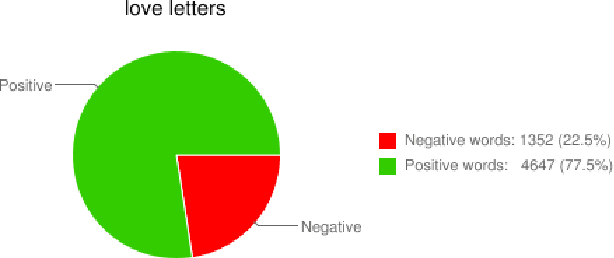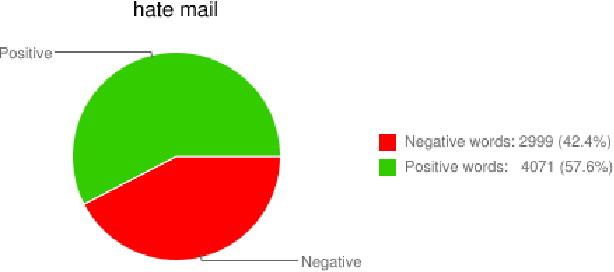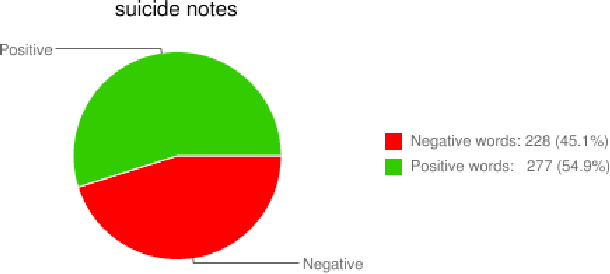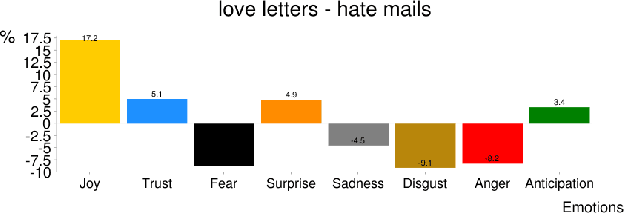Tracking Sentiment in Mail: How Genders Differ on Emotional Axes
Paper and Code
Sep 24, 2013



With the widespread use of email, we now have access to unprecedented amounts of text that we ourselves have written. In this paper, we show how sentiment analysis can be used in tandem with effective visualizations to quantify and track emotions in many types of mail. We create a large word--emotion association lexicon by crowdsourcing, and use it to compare emotions in love letters, hate mail, and suicide notes. We show that there are marked differences across genders in how they use emotion words in work-place email. For example, women use many words from the joy--sadness axis, whereas men prefer terms from the fear--trust axis. Finally, we show visualizations that can help people track emotions in their emails.
* In Proceedings of the ACL 2011 Workshop on ACL 2011 Workshop on
Computational Approaches to Subjectivity and Sentiment Analysis (WASSA), June
2011, Portland, OR. arXiv admin note: text overlap with arXiv:1309.5909
 Add to Chrome
Add to Chrome Add to Firefox
Add to Firefox Add to Edge
Add to Edge